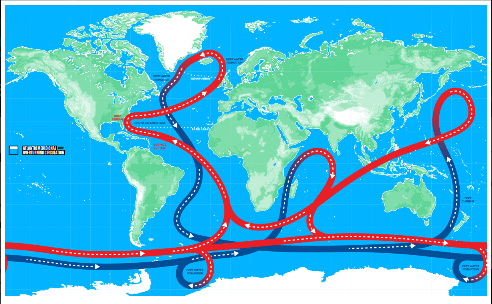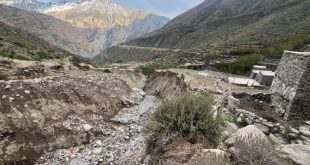Bhubaneswar: A new study has revealed the importance of mixing Atlantic and Arctic waters in sustaining the Atlantic Meridional Overturning Circulation (AMOC), a key driver in regulating Earth’s climate.
The research, conducted by an international team from IIT Bhubaneswar, University of Southampton (UK), National Oceanography Centre (UK), and Stockholm University (Sweden), explores the mechanisms behind AMOC formation.
The AMOC functions like a vast ocean conveyor belt, transporting warm tropical water northward and cold water southward, thus distributing heat globally. It plays a vital role in keeping Northern Europe, including the UK, relatively mild for its latitude. Published in *Nature Communications*, the study found that the AMOC’s lower limb consists of 72% Atlantic and 28% Arctic waters.
“As warm water reaches cooler regions of the North Atlantic, it loses heat, becomes denser, and sinks,” explains Dr. Dipanjan Dey of IIT Bhubaneswar, lead author of the study. “We discovered that much of this dense water travels northward, mixing with colder Arctic waters before flowing southward, bolstering the AMOC’s strength.”
The study estimates that Atlantic-Arctic water mixing accounts for 33% of the transformation of warm water into denser, colder water, with the remaining 67% driven by ocean-atmosphere interactions. This challenges prior assumptions that focused primarily on heat loss, underestimating the impact of water mixing.
As the planet warms, models suggest that the AMOC may weaken, potentially causing significant shifts in global climate patterns. These findings offer new insight into how Atlantic-Arctic water mixing affects climate dynamics.
“The study also has relevance in Indian context as far as climate change is concerned,” highlights Dr. Dey. “The Indian summer monsoon, which occurs from June to September, contributes approximately 80% of the country’s annual rainfall. Any variations in the timing or distribution of this rainfall can have far-reaching impacts on agriculture, the economy, and public health, both physically and mentally,” he explains.
For over 300 years, the monsoon was believed to result from large-scale land-sea breezes driven by temperature differences. However, in the1980s, the introduction of satellite imagery revealed that the cloud patterns over India closely resembled the Inter-tropical Convergence Zone (ITCZ), a low-pressure zone near the equator. This discovery redefined the monsoon as a seasonal migration of the ITCZ from the ocean toward land, rather than a simple land-sea breeze.
“The ITCZ generally stays just north of the equator, and research indicates that the northward flow of warm water in the Atlantic Meridional Overturning Circulation (AMOC) plays a critical role in maintaining this position,” Dr. Dey adds. However, with a warming climate, the AMOC is predicted to slow, reducing the northward movement of warm water and energy. This can shift the ITCZ southward, potentially weakening the Indian summer monsoon in the future.”
 Update Odisha-Latest Odisha News I Breaking News Get latest news on Odisha, Govt. Jobs, OSSC, OPSC, Entertainment, Crime, Sports, and Education
Update Odisha-Latest Odisha News I Breaking News Get latest news on Odisha, Govt. Jobs, OSSC, OPSC, Entertainment, Crime, Sports, and Education



